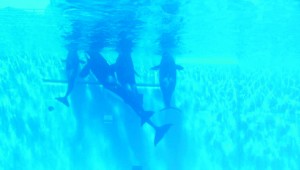By Estephania Baez
Animal breeders have existed since time immemorial. Their work entails the breeding of wild animals in captivity so that they can be domesticated and raised to behave well in enclosures that are not part of their natural environment. It was originally used to train animals to aid in hunting for food, as companions, or for protection. Today, however, man has changed these practices and now uses them to capture wild animals to make a profit by having them serve as entertainment for a paying audience.
SeaWorld has been the target of criticism at one time or another during their fifty years of existence; however, the attacks by animal rights activists have intensified in the last decade.
A proposition we moved forward in California stating that orcas were too large to be kept in enclosures, and that to do so constituted animal cruelty. It also spoke of the risk that working with these animals posed to trainers, making reference to the deadly attacks that have taken place. SeaWorld executives have denied animal abuse accusations, indicating that the Park has always treated the animals respectfully, adding that they have animal rescue and release programs in place with the involvement of hundreds of volunteers. In fact, they said, this year alone they have released over 70 sea lions that were rescued after an oil spill in California, and in the last 5 decades they have saved over 25,000 species in San Diego and 22,000 elsewhere in the U.S.
Criticism and attacks against the Park have not stopped; even their fireworks show had to be changed after Change.org activists gathered more than four thousand signatures petitioning against this kind of show at the park, stating that it altered the animals, affected people, and polluted the environment. In response to the petition, the Park’s spokesperson stated that fireworks were considered a tradition in the region that had been there for over 20 years, and that it met environmental regulations.
In 2014, SeaWorld announced a new project called Blue World, under which the spaces for the animals would almost double. According to the program, remodeling plans would begin in Summer 2015 and be finalized in 2018. The new project would attempt to recreate the natural habitat of orcas and other species, with an investment of over $10 million dollars. Investments would also be made in new initiatives for the protections of oceans and wildlife. Under the new concept, the pool the 10 orcas currently at the Park would live in will be over 40 feet tall, making it one of the largest pool enclosures in the world. This decision was also criticized by PETA (People for the Ethical Treatment of Animals), who assured that parks do not need larger water tanks, but rather to return the orcas to their marine reserves.
In spite of the multiple projects announced by the Water Park’s representatives, in 2015 they announced that the orca shows would come to an end next year, and that their environment would be transformed by 2017 into a more natural environment with an eco-friendly and educational purpose.
The decision comes three years after the release of the Black Fish documentary, which sparked a controversial debate in the U.S. regarding the capture of orcas and keeping them in captivity; since then, SeaWorld has suffered multi-million dollar losses.
 On the wake of the news about orca shows coming to an end, there are still unanswered questions, such as whether this will happen at all 11 water parks throughout the U.S., or whether the orcas currently at the Park will be released.
On the wake of the news about orca shows coming to an end, there are still unanswered questions, such as whether this will happen at all 11 water parks throughout the U.S., or whether the orcas currently at the Park will be released.